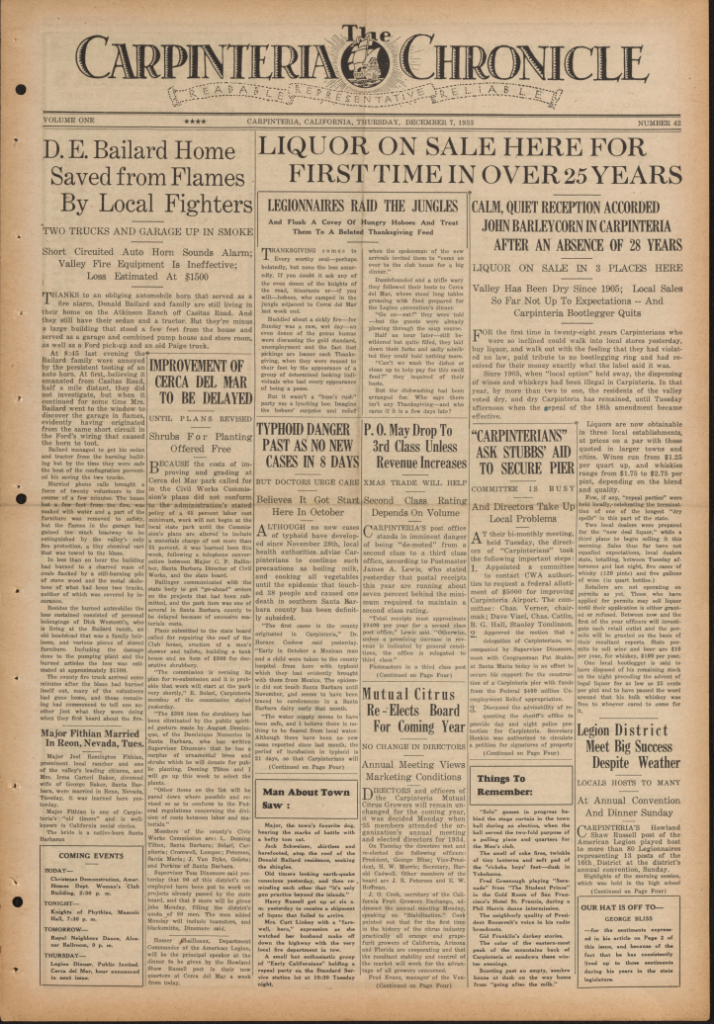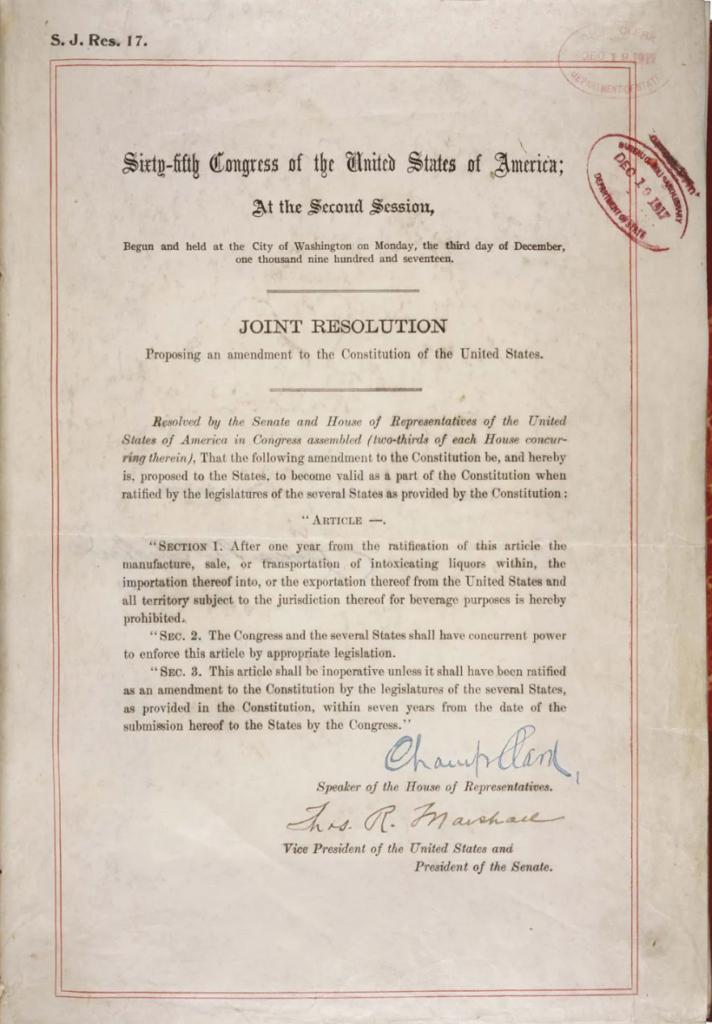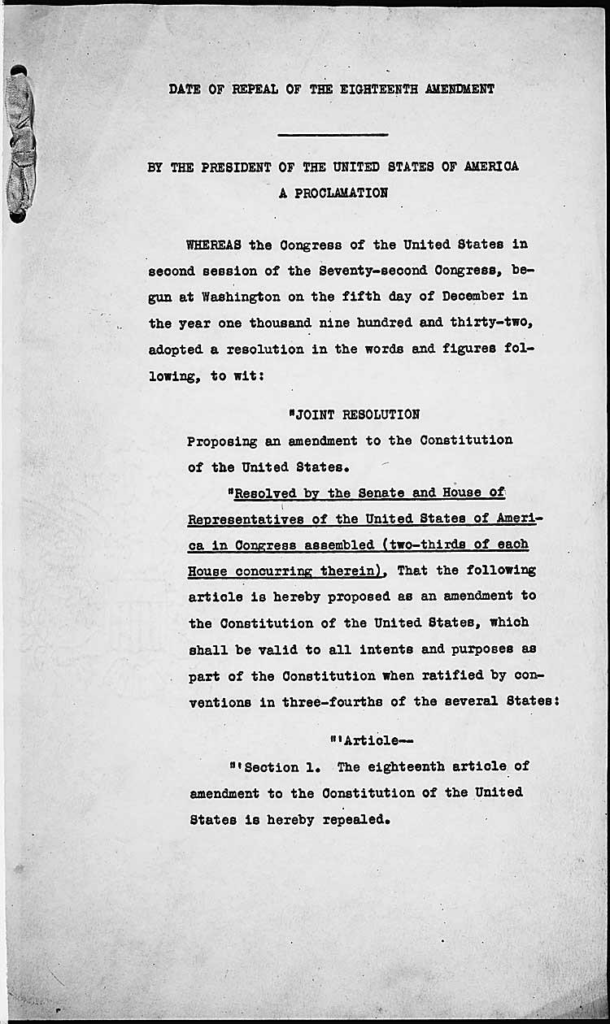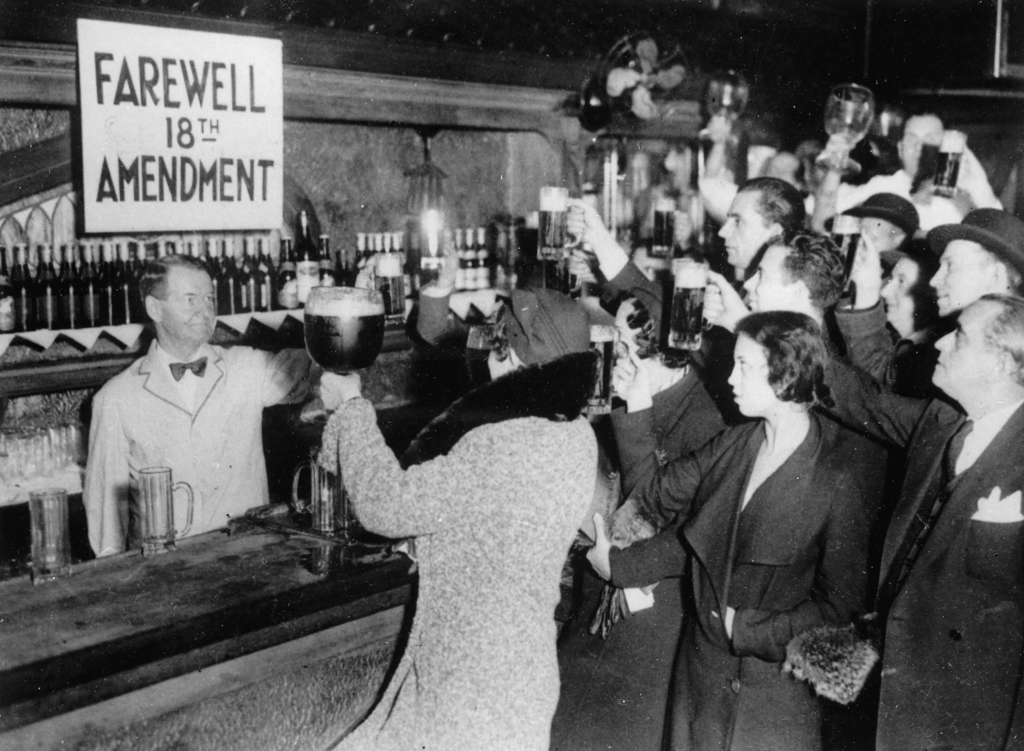The Drought is Over: The End of Prohibition in Carpinteria
Carpenteria is a small seaside town between glitzy, tourist-filled Santa Barbara and suburban Ventura. It has a population of barely 13,000 and has deemed itself “The Safest Beach” in the world. This is true now as it was ninety years ago, in December 1933, when Carpinteria became no longer dry –– at least in the alcoholic sense of the word. Carpenteria might be quiet and quaint, but this surfer’s paradise has plenty of stories to tell.

The Carpinteria Chronicle Front Page, 7 December 1933
Alcohol was a significant point of discussion in Carpinteria, nearby cities, and the broader United States in the 1920s and 1930s, as national prohibition was federally instated in 1919 before its repeal in 1933. The 18th Amendment, which ratified prohibition, forbade the “manufacture, sale, or transportation of intoxicating liquors” into and out of the United States. However, it did not stop the debates for and against temperance or people from drinking. While legal alcohol consumption effectively ceased, prohibition gave rise to bootleggers and moonshiners who illegally made alcohol.

The Eighteenth Amendment to the U.S. Constitution was ratified in 1919.
With the amendment’s repeal in 1933, people got to experience the taste of legal alcohol for the first time in over two decades. The day after the end of Prohibition, The Carpinteria Chronicle documented this new freedom:
Carpinterians who were so inclined could walk into local stores yesterday, buy liquor, and walk out with the feeling that they had violated no law, paid tribute to no bootlegging ring and had received for their money exactly what the label said it was.
The Chronicle highlights one of the key reasons why the 18th Amendment was repealed in the first place. While those against alcohol pointed to its addictive qualities and destruction of common sense and decency, people still consumed alcohol and often did so dangerously. Since few knew precisely what bootleggers incorporated into their distillations, but we now know that included paint thinner, manure, and embalming fluid.

Presidential Proclamation 2065, which repealed the 18th Amendment
The article’s author also notes that the nullification did not cause as much of a stir as expected. Though three stores started to sell liquor, these retailers were disappointed that they sold only “five cases of whisky (120 pints) and five gallons of wine (in quart bottles)” by the end of the night! There were also no “repeal parties” or increased drunkenness on the streets following the news that prohibition had finally ended. Even better news for Carpenteria, the repeal got at least one bootlegger off the streets. Upon hearing the report, the local bootlegger was forced to distribute his whisky concoction for “as low as 25 cents per pint.” Eventually, he was forced to give it free “to whoever cared to come for it.” So ended his distillery side hustle.
While this tempered response may seem odd to today’s readers (especially if they’re college students), this is not surprising in context with Carpinteria’s broader relationship with liquor. Again, the city was sober for 28 years: they had adopted prohibition in 1905 (when it depended on “local option,” or local opinion), years before the nationwide amendment was ratified. Carpinteria’s reaction also embodies the broader national response. While some individuals celebrated, even rowdier cities like New York City reported only quiet celebrations not unlike those seen on regular weekends during Prohibition.

Carpinteria had a history of being alcohol conscious. It was a consistently dry valley by the votes of its residents. It might have stayed that way if the choice was left up to the local ballot. Still, this story from The Carpinteria Chronicle highlights how such decisions were not always solely dependent on the county or state opinion–– sometimes, the federal government trumps all. There remains a diversity of opinions regarding alcohol’s role in our social lives and communities. However, with this 1933 repeal, Carpinteria, like the rest of the United States, now also had a choice: to drink or not to drink.
Victoria Korotchenko. Victoria is a fourth-year English, History, and Russian Studies major and a managing editor at the UCSB Undergraduate Journal of History. In her free time, she enjoys reading, especially at Santa Barbara’s cafes and beaches.
Works Consulted:
“18th Amendment”. National Constitution Center.
Document for December 5th: Presidential Proclamation 2065 of December 5, 1933, in which President Franklin D. Roosevelt announced the Prohibition’s Repeal—the National Archives of the United States of America.
“The End of Prohibition.” History.com, 05 March 2013.
“Liquor on sale here for the first time in 25 years.” Carpinteria Chronicle (Carpinteria, CA), Dec. 7, 1933.
